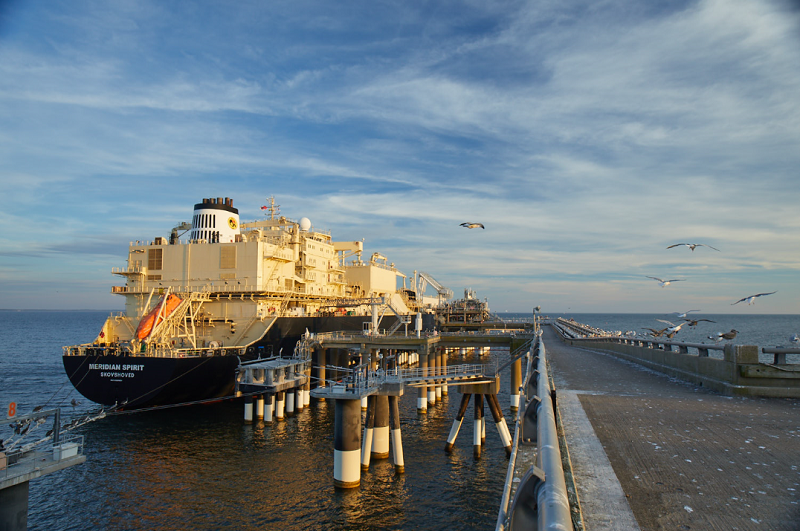Dominion's Cove Point LNG Terminal Loads 100th Commercial Ship
(P&GJ) — Dominion Energy's Cove Point LNG Terminal said it loaded its 100th commercial LNG ship this week—nineteen months after the facility entered commercial service for natural gas liquefaction and export.
Located in Lusby, Maryland, the Cove Point LNG Terminal became the second-largest LNG export facility in the continental U.S. – and the first on the East Coast – when it entered commercial operation on April 9, 2018. Cove Point produces LNG under 20-year contracts for ST Cove Point, a joint venture of Sumitomo Corporation and Tokyo Gas, and for Gail Global (USA) LNG, the U.S. affiliate of GAIL (India).
"This is a major milestone for Dominion Energy and our country as a whole," said Paul Ruppert, Dominion Energy's President of Gas Transmission and Storage. "It reflects not only the world-class design and operational excellence of our facility, but also the environmental progress we are making by reducing global reliance on coal, oil and other carbon-intensive energy sources," Ruppert continued.
To date, the facility has produced more than 4 billion gallons of LNG, with export ships reaching more than 20 countries across the globe.
The Cove Point facility is capable of performing all the functions of an LNG facility, including import, export, vaporization and send out, and liquefaction. Since entering commercial service, the company said, the facility has operated reliably in all weather conditions, including ambient temperatures ranging from 9°F to 105°F.
"The facility's waste heat recovery and zero liquid discharge system are truly best in class and show how we can responsibly develop infrastructure while at the same time protecting our air and water," Ruppert said.
The Cove Point facility is located along the largest freshwater marsh, a rare ecosystem, on the western shore of the Chesapeake Bay. After a severe storm in 2010 damaged the unique marsh environment, the company dedicated more than 50,000 manhours to restore the marsh and the barrier beach that protects it from brackish water.
Related News
Related News

- Trump Aims to Revive 1,200-Mile Keystone XL Pipeline Despite Major Challenges
- ONEOK Agrees to Sell Interstate Gas Pipelines to DT Midstream for $1.2 Billion
- Energy Transfer Reaches FID on $2.7 Billion, 2.2 Bcf/d Permian Pipeline
- Boardwalk Approves 110-Mile, 1.16 Bcf/d Mississippi Kosci Junction Pipeline Project
- Kinder Morgan Approves $1.4 Billion Mississippi Crossing Project to Boost Southeast Gas Supply
- Tullow Oil on Track to Deliver $600 Million Free Cash Flow Over Next 2 Years
- GOP Lawmakers Slam New York for Blocking $500 Million Pipeline Project
- Energy Transfer Reaches FID on $2.7 Billion, 2.2 Bcf/d Permian Pipeline
- Enbridge Should Rethink Old, Troubled Line 5 Pipeline, IEEFA Says
- Polish Pipeline Operator Offers Firm Capacity to Transport Gas to Ukraine in 2025





Comments